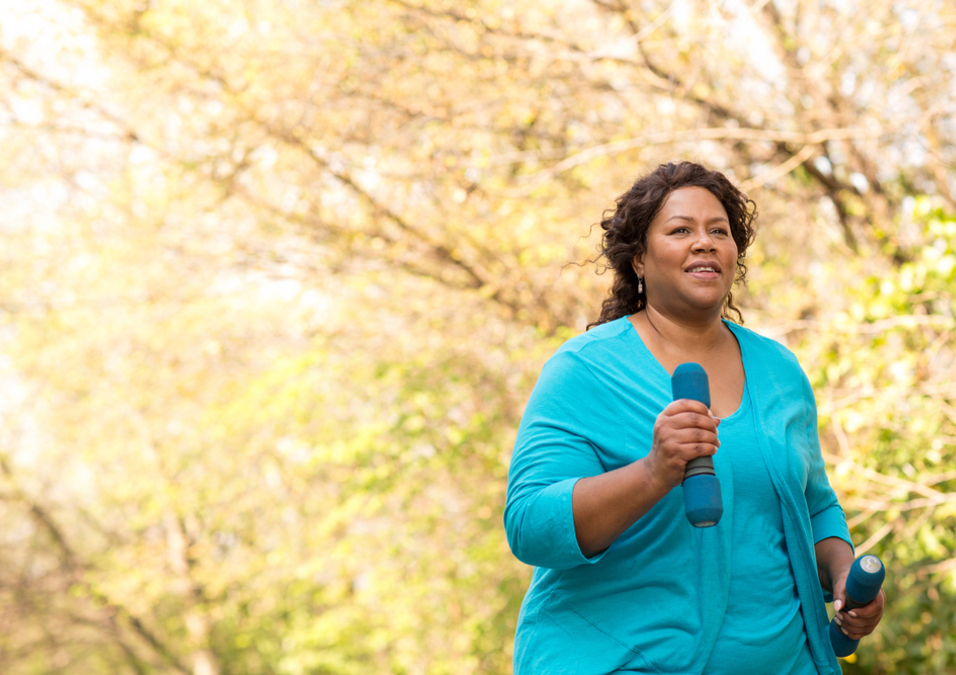The benefits of daily physical activity

SIGN UP FOR YOUR FREE DAY PASS TODAY!
Every May, the United States celebrates National Physical Fitness and Sports Month.
Established in 1983, this annual event aims to motivate Americans to become more active and adopt healthier lifestyles.
But why is regular physical activity so important? And how can we incorporate more movement into our daily routines?
Erika Graziani, a certified lifestyle medicine practitioner and registered dietitian with Lee Health, discusses the benefits of staying fit and offers tips for daily activity.
The Incredible Benefits of Physical Activity
Erika emphasizes that engaging in regular exercise is one of the most beneficial actions you can take for your overall health and well-being.
These benefits are significant for people of all ages.
"Getting active can seem daunting, especially if you're not used to it or are trying to restart," she says. "Even small steps can make a difference. The key is to begin at a comfortable and realistic pace, then gradually build from there. You'll be amazed by the benefits."
- Strengthens your heart and lungs: Aerobic activities like walking, running, swimming, and dancing enhance the efficiency of your heart and lungs. This improves your entire cardiovascular system.
- Builds muscle strength: Muscle-strengthening exercises, such as lifting weights or doing push-ups, increase muscle size and strength. This boost in muscle tone enhances your metabolism and provides more strength for daily tasks.
- Controls weight: Regular exercise burns extra calories, helping to maintain a healthy weight or lose excess body fat. It also revs up your metabolism, burning more calories even when at rest.
- Improves bone health: Weight-bearing exercises like walking, running, or lifting weights stimulate new bone growth and help prevent osteoporosis.
- Reduces risk of falls: Activities that enhance balance, flexibility, and coordination can help prevent falls and injuries, especially in older adults.
- Boosts mood and energy levels: Exercise releases endorphins and serotonin in the brain, acting as natural mood enhancers. It also provides more energy and stamina throughout the day.
- Promotes better sleep: Regular exercisers tend to sleep better and wake up feeling more refreshed. Quality sleep is crucial for both physical and mental health.
- Reduces disease risk: Staying active can help prevent or manage many chronic conditions, including heart disease, type 2 diabetes, certain cancers, arthritis, and depression.
- Increases longevity: Research indicates that people who maintain moderate to high physical activity levels have a lower risk of premature death compared to inactive adults.
How Much Activity Do You Need?
Incorporating daily movement offers numerous health benefits for both body and mind. But how much physical activity is sufficient?
"Research shows that health benefits from physical activity start to accumulate once you begin moving," Erika says.
"More activity provides more benefits. Even a single episode of physical activity will offer some health perks. The key is just to start moving, whether it’s taking a brisk walk or riding your bike through the neighborhood."
Health experts like Erika ideally recommend at least 150 minutes a week of moderate-intensity aerobic activity, based on the Physical Activity Guidelines for Americans.
This helps reduce the risk of many chronic diseases and other adverse health outcomes.
Consult your doctor to determine what types of activity are safe for you.
What Are Aerobic Activities?
Aerobic activities, also known as cardio exercises, involve moving the body’s large muscles rhythmically for a sustained period.
"Brisk walking, running, bicycling, jumping rope, and swimming are all examples," Erika explains. "Aerobic activity makes your heart beat faster and causes you to breathe harder than normal.
Regular participation can improve your heart's ability to pump blood to your lungs and throughout your body. Consequently, more blood flows to your muscles, and oxygen levels in your blood increase."
Aerobic physical activity comprises three components:
- Intensity: How hard you work to perform the activity. Common intensity levels include moderate activity like brisk walking and vigorous activity like running or jogging.
- Frequency: How often you engage in aerobic activity.
- Duration: How long you perform the activity.
Erika recommends aiming for 150 minutes of moderate-intensity aerobic activity or 75 minutes of vigorous-intensity aerobic activity each week.
"You can also do a combination of both," Erika suggests. "A general rule is that two minutes of moderate-intensity activity count the same as one minute of vigorous-intensity activity. Remember, the more active you are, the more benefits you can gain."
What Are Muscle-Strengthening Activities?
Muscle-strengthening activities involve resistance training and lifting weights. These exercises make the muscles work or resist against a force or weight.
“To build muscle strength, you can lift weights, use resistance bands, or utilize your own body weight for resistance, such as with push-ups,” explains Erika.
Muscle-strengthening activities consist of three main components:
- Intensity: The amount of weight or force you can lift or hold.
- Frequency: How often you engage in muscle-strengthening activities.
- Sets and Repetitions: The number of times you lift a weight or perform a push-up.
Erika emphasizes the importance of exercising all major muscle groups, including the legs, hips, back, abdomen, chest, shoulders, and arms.
What Are Bone-Strengthening Activities?
Bone-strengthening activities, also known as weight-bearing exercises, generate a force that challenges the bones, encouraging growth and strength.
Activities like jumping jacks, running, brisk walking, and weightlifting not only strengthen bones but also benefit the cardiovascular system and muscles.
What Are Balance and Flexibility Activities?
Balance and flexibility exercises can enhance muscle strength, maintain bone density, improve balance, and reduce joint pain.
Specifically, balance exercises can decrease your risk of falls by strengthening your core and improving coordination. These exercises target the muscles of your back, abdomen, and legs.
Examples of balance exercises include standing on one leg, marching in place, and tightrope walking.
Flexibility activities help joints maintain the necessary range of motion for daily tasks and physical activities. Stretching, yoga, tai chi, and Pilates are good examples of flexibility exercises.
Balance and flexibility activities are beneficial for all ages, particularly for older adults.
“Consult with your doctor about your overall health and fitness goals,” Erika advises. “Your doctor can recommend specific exercises to include or avoid based on your health status.” Your doctor might also refer you to an exercise specialist or physical therapist for more detailed guidance.
Ideally, older adults should practice balance exercises at least three times a week.
Fitting in Fitness: Simple Strategies
How can you incorporate more physical activity into your daily routine? Erika offers the following tips and tricks:
- Start Small: Transitioning from no activity to a full workout routine can be challenging. Begin with just 10 minutes per day and gradually increase as you build strength and endurance.
- Make It Fun: The best exercise is one you enjoy! Explore various options like sports, dancing, hiking, cycling, or fitness classes until you find your favorites.
- Grab a Buddy: Exercising with a partner can keep you motivated and accountable. Invite friends, family members, or co-workers to join you in staying active.
- Use Tech Tools: Wearable fitness trackers and mobile apps with step counters can help set goals, monitor progress, and keep you inspired to stay active.
- Break It Up: You don't need to complete all your activity at once. Three 10-minute sessions throughout the day can be just as effective as one 30-minute workout.
- Build Routines: Make physical activity a regular part of your daily or weekly schedule. Take a walk during your lunch break, do bodyweight exercises before bed, or take a fitness class on weekends.
- Get Creative at Home: No gym membership is necessary! You can stay active by cleaning the house, dancing around, or doing an exercise video. Yard work and gardening also count.
“The key is finding activities you enjoy and integrating them into your life in a sustainable way,” Erika says. “Staying physically active is one of the smartest choices you can make for better health and well-being at any age.”
Source: leehealth
The opinions shared in the GymNation blog articles are solely those of the respective authors and may not represent the perspectives of GymNation or any member of the GymNation team.
GET YOUR FREE TRIAL TODAY














































































